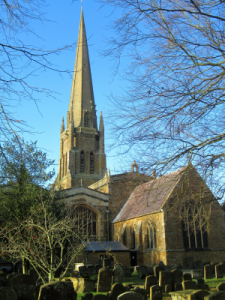 In a special guest blog, Connor McNeill – Interim Churches Conservation Adviser at the Victorian Society – writes about how best to find solutions to the sometimes vexed issue of restoring or re-ordering a Victorian church.
In a special guest blog, Connor McNeill – Interim Churches Conservation Adviser at the Victorian Society – writes about how best to find solutions to the sometimes vexed issue of restoring or re-ordering a Victorian church.
image: St Matthew, Edgeley – NCT website
… go to almost any city, town or village, and you will find a church that has something from the Victorian era…
Connor McNeill writes in the blog:
When at Kings Cross railway station, I always try to take a look at Sir George Gilbert Scott’s magnificent Midland Grand Hotel. This Gothic Revival masterpiece is one of the fullest expressions of the Victorian mind and its architectural aspirations in the country.
Yet go to almost any city, town or village, and you will find a church that has something from the Victorian era, whether it be a pew, stained glass window, or tiled floor. The Midland Grand Hotel may be spectacular, but the churches of our country are the much loved, gentle reminders of how much the Victorians affected our built landscape.
The Victorian Society receives over 850 church related consultations a year. In any given week we can receive applications ranging from new gutters to masterplans for the redevelopment of city centre churches. We try to do two things in our responses to these consultations: preserve Victorian buildings, and increase their appreciation.
Compared to the early days of the Society our work has changed. Now there is a statutory obligation to consult us on many proposals, and appreciation of Victorian and Edwardian architecture has increased greatly. However, in many cases although Victorian architecture may be thought beautiful, it is not often valued in the same way as Medieval and Georgian architecture and continues to be at risk.
Pews and fittings
The lack of appreciation for Victorian architecture is probably strongest in our church casework. Our defence of Victorian church fittings where appropriate, especially pews, has given us a popular reputation of stubbornness and obstinacy.
Some church fittings may appear unremarkable as individual pieces of furniture, but they almost always form a valuable part of a church’s Victorian character. A large minority of churches possess fittings of a high, and often underappreciated, quality. To be true to our aims of conservation and appreciation of Victorian architecture sometimes we have to defend strongly churches that are underappreciated and their fine fittings.
If there is disparity between the views of the Victorian Society and a parish when we are consulted it can go two ways. If we are contacted early in an application a discussion can be started, we can share our expertise on the church’s Victorian features whilst learning about the parish’s needs. Often a compromise is found.
Such an example would be St Uny’s, Lelant, where we learnt more about this fine church restored by J D Sedding, but the parish also grew to appreciate the important Victorian features in the church. However, sadly it is more often the case that we are contacted towards the end of an application when a parish have invested time and money to finalise their proposals. Naturally, our opposition at that point is unwelcome, and yet we must act if the importance of what will be affected hasn’t fully been assessed and it would be damaged by the proposals.
Unfortunately, this can give rise to an adversarial atmosphere and each side is felt to be stubborn: the Victorian Society opposing change, the parish which will not listen our advice. Often arguing over upholstered chairs and carpet, things which official Church guidance is clear are not acceptable. Such situations can sometimes only end in the unpleasantness and cost of a consistory court hearing.
Finding solutions, not obstacles
No consultation of the Victorian Society need be like this. We would urge anyone: priest, parish council member, or congregant who is involved in a faculty application which may affect Victorian architecture or fittings to contact us as soon as possible to start a conversation.
Sir George Gilbert Scott’s Midland Grand Hotel was saved from demolition in 1967, after a campaign led by the Victorian Society. Just over 50 years later anyone who visits this building would wonder why demolition was ever contemplated. This is a testament to the change of attitude to Victorian Architecture, something the Victorian Society is thankful for.
However, there is still much work for the Victorian Society to do. So, if you are considering changes to a church, even if you do not personally like the Victorian fittings, work with us to find a solution that works best for both your mission, and these special buildings that continue to interest and entrance worshippers and visitors alike.

